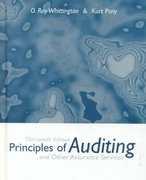Answered step by step
Verified Expert Solution
Question
1 Approved Answer
please its a request i need all subparts i will thumb up many times please solve in 40 minutes 10.7. If the interest rate (MARR)



please its a request i need all subparts i will thumb up many times please solve in 40 minutes
10.7. If the interest rate (MARR) increases for a typical engineering investment project set of cash flows: a. The NPV (PW) will decrease. b. The NPV (PW) will not change. c. The non-discounted payback period will increase. d. The IRR will increase. 10.8. If we use year 2005 as our reference year whose price index is 100. For an equipment that is purchased in year 2010 at cost m, what is its cost in 2021 if the price index is 143 in 2010 and 245 in 2021? a)236m/100 b)245m/143 c)158m/236 d)100m/236 e)2017 m/2007 10.9. Which of the following is the limitation of the payback method? a) Time neutral b) Scale neutral c) May have multiple roots with complex cash flow d) Do not represent profitability e) Computational intensive A 10.4. The IRR: a. Is appropriate for projects with only cash outflows. b. Is equal to the MARR if the project's NPV (or PW) equals zero. c. Is equal to the external rate of return (ERR) d. Is equal to the project's NPV (or PW) if the MARR equals zero. 10.5. Circle the false statement: a. The payback period is a measure of risk and exposure rather than of overall project economic valuation. b. The capitalized worth (CW) figures the amount needed for a perpetual (lasts forever) endowment that generates a certain amount of earnings each year t a fixed interest rate (such as is done for endowed scholarships). c. Using the annualized equivalent method will give the same decision as to which projects to select as using the NPV (NW) method when analyzing potential independent investment projects. d. Depending on the method we use (among AW, PW, and FW), our results for whether a project is economically justified or not could be different. 10.6. The Minimum Attractive Rate of Return (MARR): a. Can be positive, zero or negative. b. Does not consider inflation or risk. c. Is set to the current value of U.S. government securities (T-bills). d. Considers the time value of money, the risk of the investment and any inflation. Question 10 (18 points) Circle the best answer to each multiple choice below and submit your answer in your Gradescope submission (there is only one best answer). (2 points each) 10.1. The End of Year (or End of Period) convention: a. is used to simplify engineering economy studies. b. assumes that cash flows occur at the beginning, midpoint and end of each period. c. is only used for engineering economy studies with N > 5. d. is only used for engineering economy studies that assume i = 0%. 10.2. The future worth of a set of cash flows over time: a. is found through the trial and error method. b. will be equal to its present worth when i is negative. c. differs from the present worth by a positive constant. d. will be zero if the NPV is negative. 10.3. In loan amortization: a. the amount of interest paid each period is always more than the amount of principal paid. b. the periodic (such as monthly) payment varies over the lifetime of the loan. c. the total amount of principal repayment depends on the interest rate. d. the amount of principal paid each period increases over the lifetime of the loan. 10.4. The IRR: into for proiects with only cash outflowsStep by Step Solution
There are 3 Steps involved in it
Step: 1

Get Instant Access to Expert-Tailored Solutions
See step-by-step solutions with expert insights and AI powered tools for academic success
Step: 2

Step: 3

Ace Your Homework with AI
Get the answers you need in no time with our AI-driven, step-by-step assistance
Get Started


